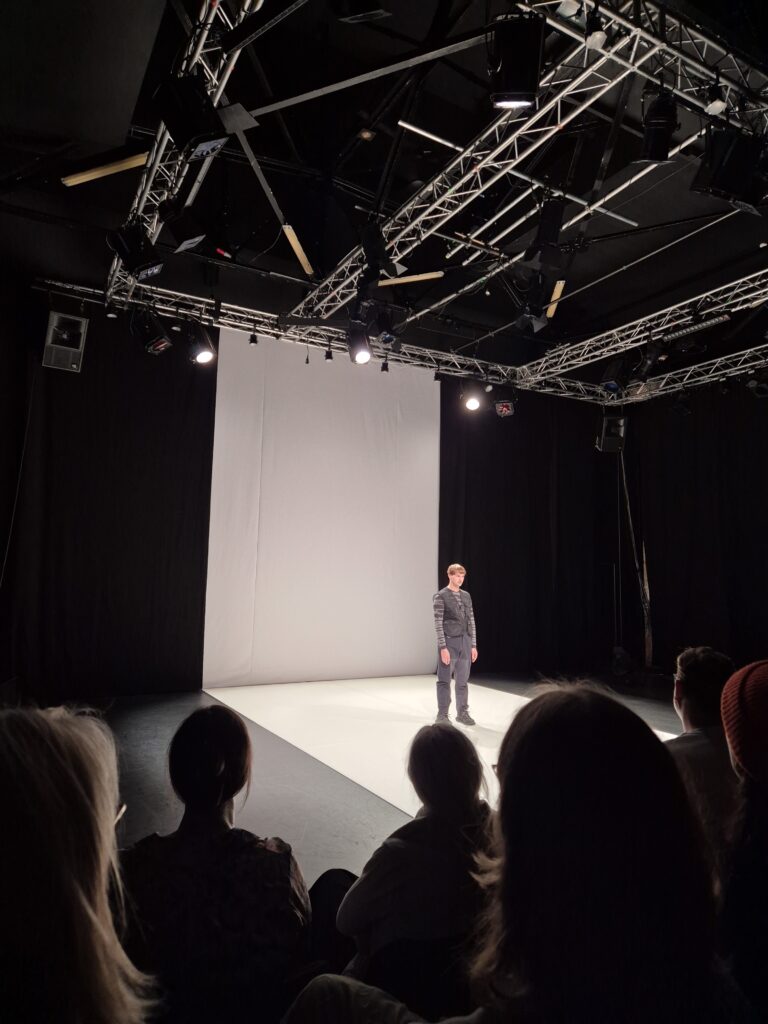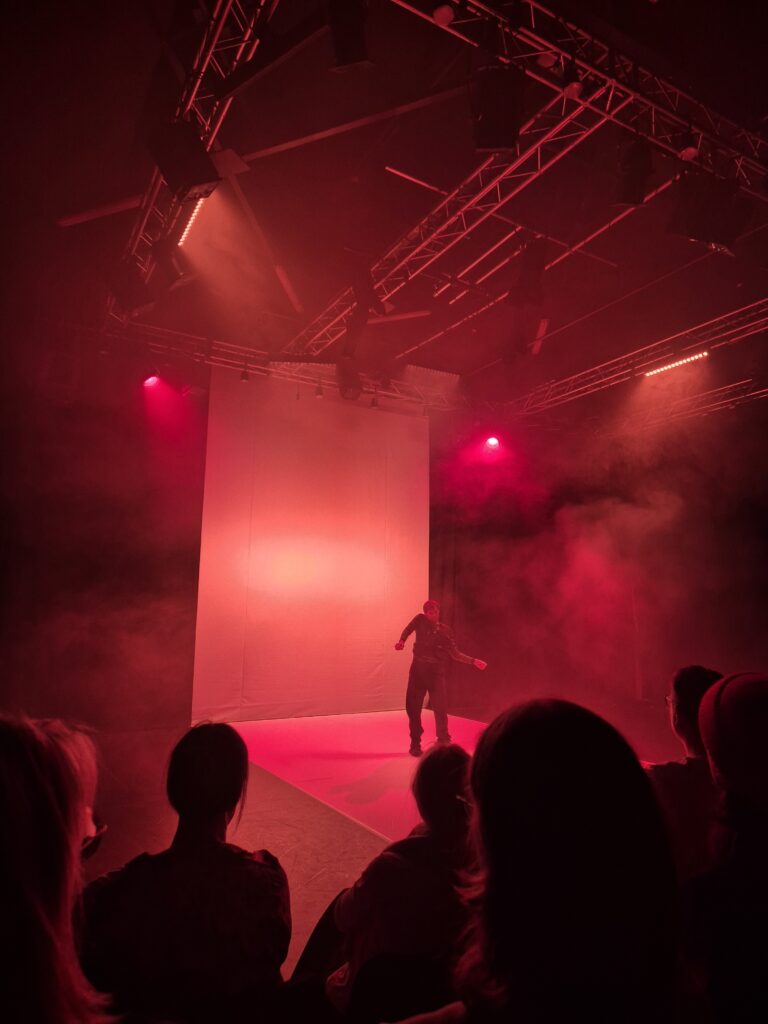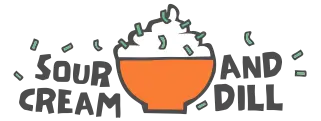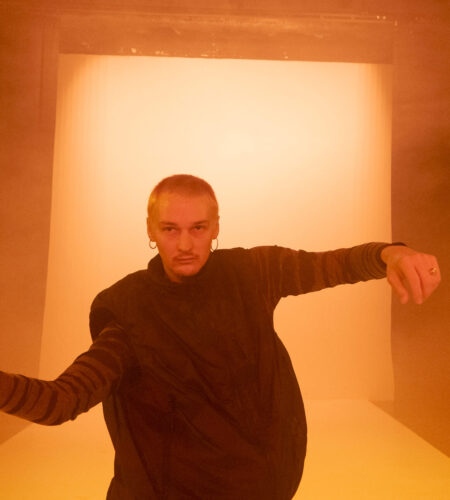The discussion around mental health and the complexities of being human is never-ending. Sõltumatu Tantsu Lava has stepped into the discussion with this year’s Sõltumatu Tantsu Festival. The performances highlight critical social issues, including burnout, aging, and beauty standards, by combining dance and technology.
One of these performances was Hungarian choreographer Viktor Szeri’s “Fatigue” which was also recently awarded the title of the best dance performance in Hungary. At the heart of the performance are themes of mood swings, slowed reflexes, and dizziness, where the various physical and psychological symptoms of burnout seep unnoticed into our everyday lives.

The stage consisted of a strip of white fabric that cascaded down on the side of the wall onto the floor. The performance began with Szeri stepping onto the middle of the stage, dressed in black and gray in a strong utilitarian style. The performance had a slow beginning, easing people into the atmosphere. With the help of the smooth, resonant music and Viktor’s enchanting hand movements, I was pulled into a trance, which quickly turned into suspense as I wondered what was coming next. The music continued to transform, bringing in deeper sounds to highlight a declining mental state, the struggles of burnout, and the darkness that can overcome a person. With each beat, Szeri’s movements became faster, incorporating more of his body. His body movements were executed with precision, without looking rigid. Undoubtedly conveying a sense of control, showing that he is present in the moment at hand and reminding viewers to pay attention to the moment in which they are witnessing the performance.

When his movements became more elaborate, so did the staging and technical aspects of the performance. The aforementioned white strip of fabric was laid down with the idea of being a backdrop for projecting various images that complimented Szeri’s movements and guided the viewer through the performance. Flashing a multitude of colors, it displayed the array of diverse moods that a person who is suffering from burnout endures, whether these emotions are bottled up inside or let out. The lighting was a mix of colors, strobes, and classic stage lighting, which were all strategically placed to create effects essential to the plot of the performance. For instance, there were spotlights on Szeri, which created massive shadow figures on the wall. Paired with the use of smoke that covered the stage, I found this scene to be a message about rediscovering yourself after or even during the burnout process. The show ended with warm lights, imagery, and music, expressing the idea that dark situations will get better and that peace can be found. At the very end, images flashed across the screen, speeding up bit by bit, until it became uncomfortable to look at the screen. The subject is rather uncomfortable and in a way I was relieved to feel that sensation in addition to many other emotions. This was a powerful experience into a person’s psyche. I truly recommend taking the time to dive into the world of mental health that is expressed through dance and performances.
The Sõltumatu Tantsu Festival has now ended but many more shows can be seen during the Sõltumatu Tantsu Lava autumn program, including “Shelter Ouroboros”, on the 1st of November and “Standstill” on the 8th of November.
Subscribe to our email newsletter to get the latest posts delivered right to your email.

